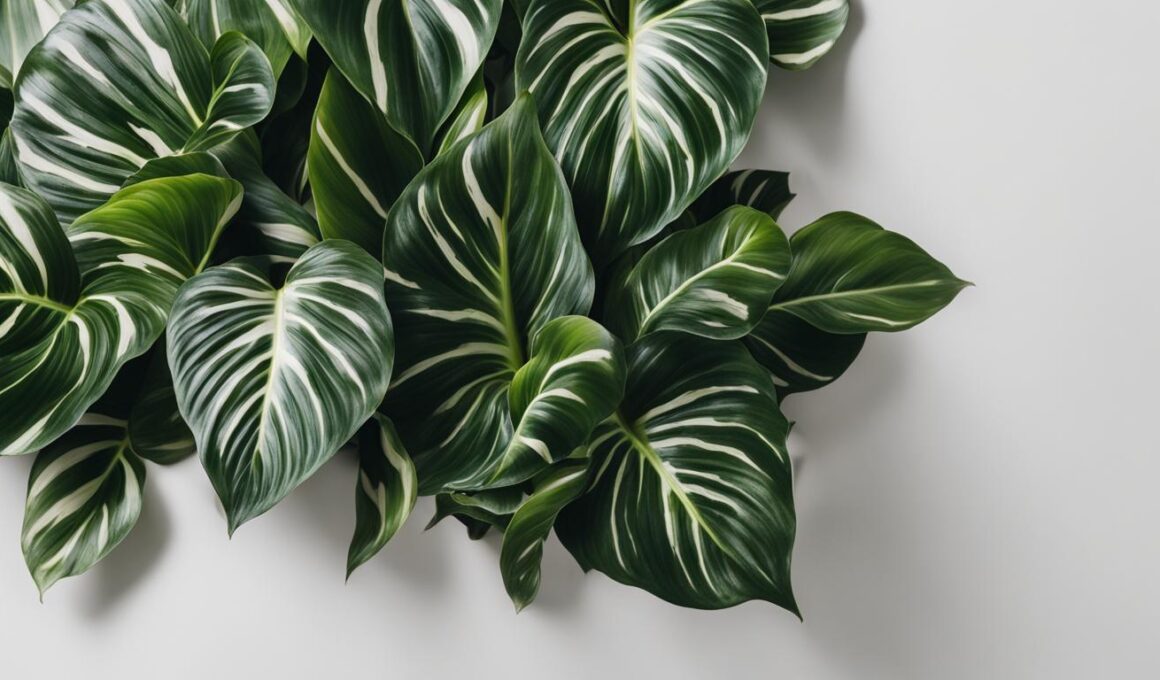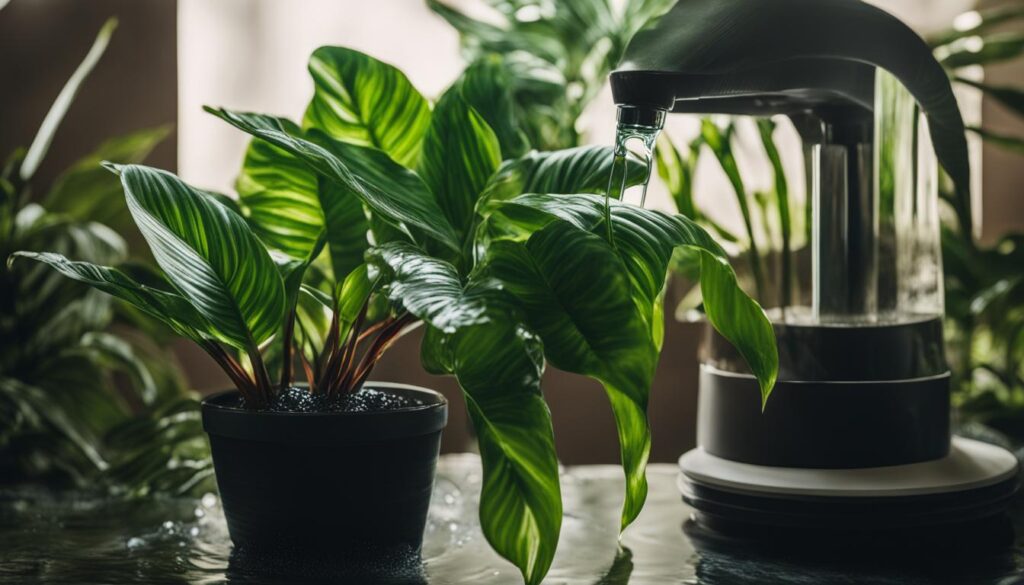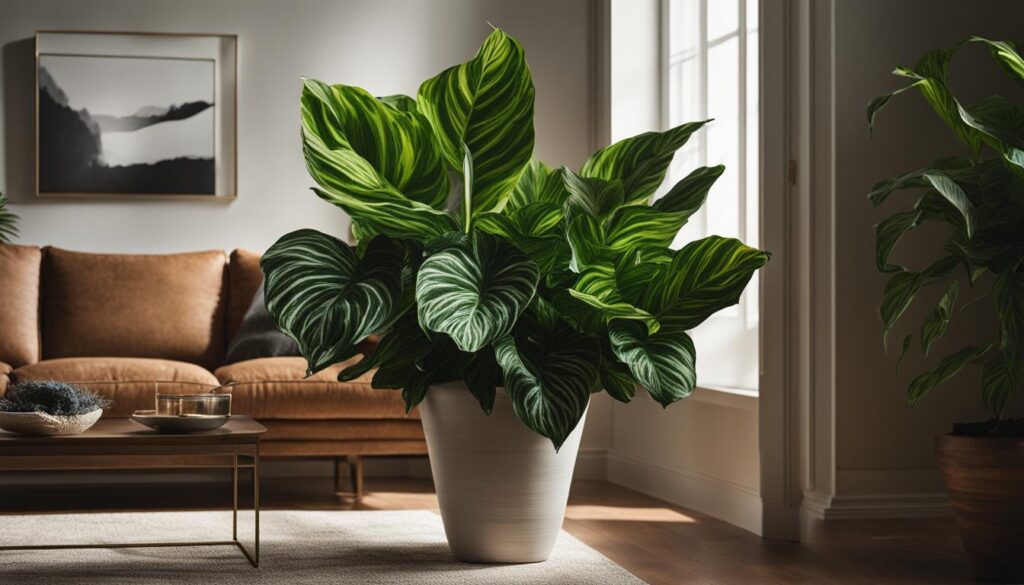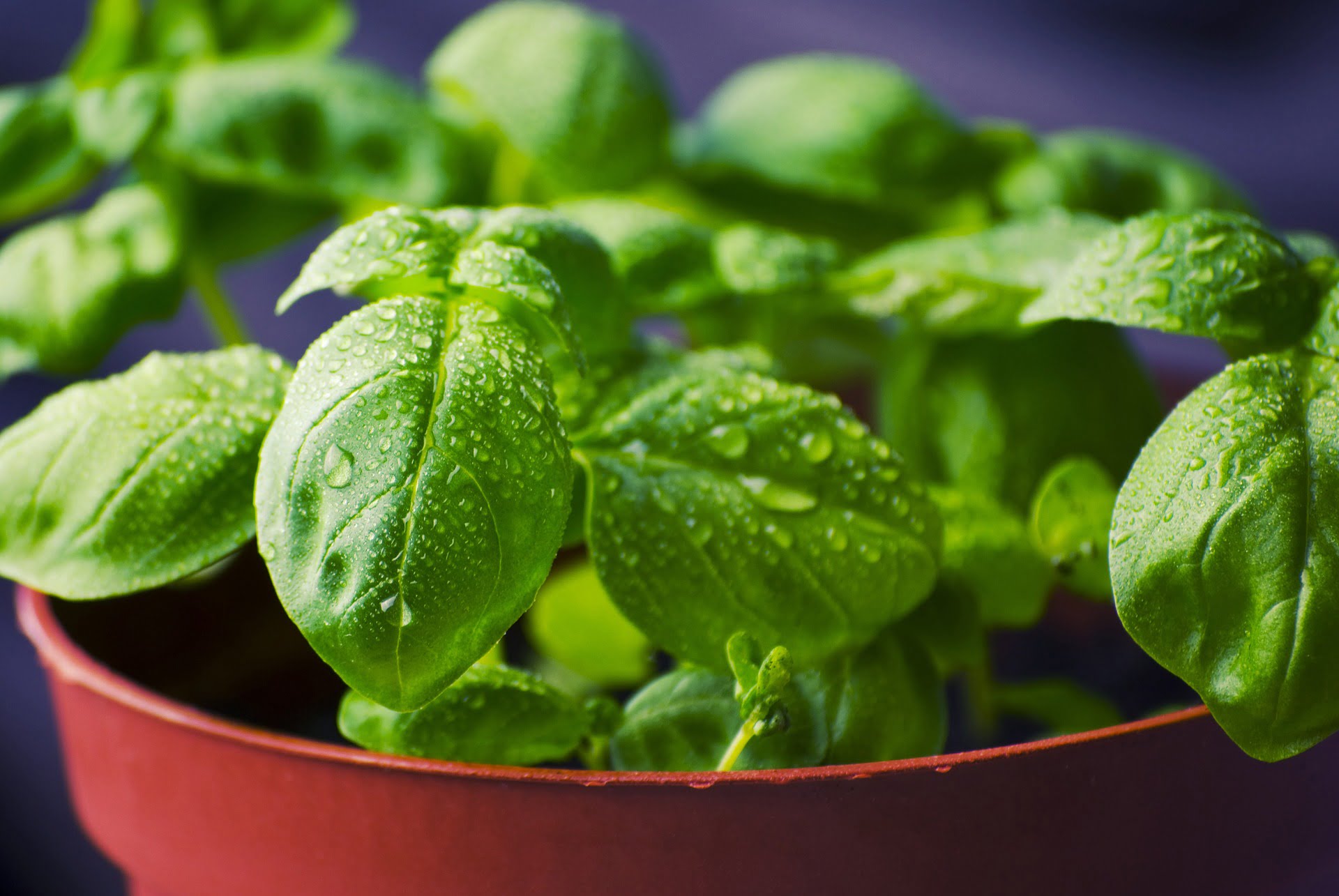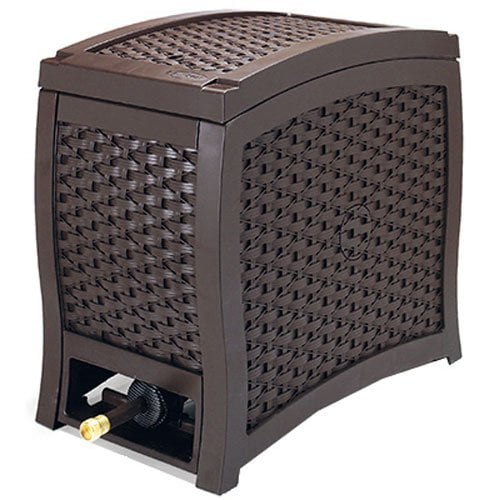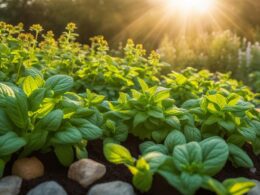Is your Calathea’s stunning display marred by curling or browning leaves? Don’t worry – with proper care and attention, your plant can make a full recovery. In this guide, we’ll cover everything you need to know about identifying and treating the causes of Calathea leaves curling and turning brown. By following these tips, your Calathea will bounce back to its former glory in no time.
Key Takeaways
- Trimming brown and curled leaves with sterilized scissors promotes healthy growth and prevents plant shock.
- Calathea leaves can brown due to poor water quality, low humidity, or dry soil conditions.
- Using filtered water and soak-watering techniques will improve hydration and prevent damage.
- High humidity, indirect sunlight, and stable room temperatures are essential for Calatheas to thrive.
- Addressing each of these factors can help you successfully revive your struggling Calathea plant.
Understanding the Problem: Why Calathea Leaves Suffer
There are various reasons why you might be facing Calathea common issues such as brown Calathea leaves or other Calathea leaf problems. To adequately address these problems and prevent them from recurring, it is important to understand the primary causes. In general, brown leaves in Calathea plants stem from poor water quality, low humidity, or dry soil.
- Poor water quality: Tap water often contains chemicals, like chlorine and fluoride, which can be detrimental to your Calathea plant. Using water with high levels of salts or chemicals can cause leaf browning and curling, which won’t reverse to a healthy green state even after the issue is resolved.
- Low humidity: Calathea plants thrive in high humidity environments. Insufficient humidity levels in your home can lead to dry, crispy leaves and poor overall plant health.
- Dry soil: Calathea plants require consistently moist soil, and providing inadequate moisture can lead to dry, brown leaves. Overly dry soil can also hamper the plant’s growth and overall health.
Once you have identified the cause of the brown leaves, it’s crucial to take appropriate steps to remediate the issue and prevent it from recurring. However, it’s important to note that the brown sections of the leaves will not revert to green and must be removed. When doing so, use disinfected sharp tools and avoid cutting more than 20-25% of the foliage at one time to prevent shocking the plant.
Below is a table detailing the primary causes of brown Calathea leaves and their solutions:
| Cause | Solution |
|---|---|
| Poor water quality | Use filtered or distilled water free of salts and chemicals, or let tap water sit overnight to reduce chlorine content before use. |
| Low humidity | Increase humidity levels using methods such as misting, utilizing a humidifier, or creating a pebble tray filled with water. |
| Dry soil | Establish and maintain a proper watering schedule, ensuring the soil remains consistently moist but not overly saturated. |
Proper Watering Techniques to Prevent Damage
Water quality and watering techniques play a crucial role in maintaining the health of your Calathea plant. In this segment, we will discuss the issues caused by tap water, the soak-watering method, and how to maintain proper moisture balance to prevent Calathea leaves from curling and turning brown.
The Perils of Tap Water: Salts and Chemicals
Calathea tap water damage may be the cause of your plant’s leaves curling and turning brown. Contaminants like salts, fluoride, and chlorine in tap water can have adverse effects on your Calathea plant. Chlorine, in particular, is harmful as it creates chlorine effects on plants such as leaf burn, which causes leaves to turn brown and curl.
To combat this issue, use water filtration for plants to remove harmful elements from your tap water. Alternatively, let your tap water sit at room temperature for at least 24 hours, allowing the chlorine to evaporate before use.
The Soak-Watering Method for Thorough Hydration
One of the most effective ways to ensure optimal Calathea hydration is by employing the soak-watering method. Soak-watering Calathea involves placing the pot’s base in a tub or container filled with 3-4 inches of lukewarm water. Let it sit for at least 45 minutes, allowing the soil to completely absorb the water.
This method ensures that the roots and soil are evenly hydrated, lessening the chances of Calathea underwatering or overwatering. Don’t forget to maintain a consistent Calathea watering schedule every 1-2 weeks, depending on the environmental conditions and your specific plant’s needs.
Maintaining Moisture Balance: Not Too Dry, Not Too Damp
One critical aspect of Calathea care is finding the perfect soil moisture balance. When it comes to watering your plant, always check that the top 1-2 inches of soil have dried out. Overly dry or damp soil can lead to Calathea underwatering and overwatering, respectively. Both extremes can cause leaf curling and browning.
To monitor your Calathea soil moisture balance effectively, use the following guidelines:
- Water your plant when the top 1-2 inches of soil are dry.
- Be cautious not to overwater, as this can cause root rot and consequently lead to drooping leaves.
- Make sure the pot has proper drainage to avoid standing water, which can harm the plant.
By implementing proper watering techniques and paying attention to water quality, your Calathea plant will thrive with healthy and vibrant leaves.
Creating the Perfect Humidity Level for Calatheas
As tropical plants, Calatheas are known for their Calathea humidity requirements which need to be fulfilled in order to thrive and maintain their vibrant leaves. Indoor environments may sometimes lack the required levels of humidity for these houseplants. Fortunately, there are several effective ways to increase humidity for houseplants, specifically designed for Calathea plants.
Methods to Increase Humidity
Here are some of the methods you can follow for increasing humidity and ensuring proper Calathea plant care:
- Regular Misting: Light misting of the leaves can provide the required humidity to your Calatheas. Make sure to use filtered or distilled water to avoid any reaction with the chemicals present in tap water.
- Pebble Trays: Place a tray filled with water and pebbles under the pot, ensuring the base of the pot doesn’t touch the water. The water will evaporate slowly, creating a humid environment for the Calathea.
- Humidifiers: Using a humidifier can help maintain the humidity levels in the room where the Calathea is placed. This is especially useful during winter months when indoor air tends to be drier.
| Method | Advantages | Disadvantages |
|---|---|---|
| Regular Misting | Easy and cost-effective | Needs to be done more frequently |
| Pebble Trays | Low maintenance | Less control over humidity levels |
| Humidifiers | Consistent humidity levels | May require an additional cost for equipment |
Keep an eye on the Calathea’s leaves for any signs of dryness or brittleness to determine if the humidity levels are adequate. Implementing the above methods in combination or using a humidifier can significantly help in maintaining optimal humidity levels and contribute to the overall health of your precious Calathea plant.
Lights and Shades: Providing Ideal Lighting Conditions for Calathea
Calathea plants have unique light requirements compared to other houseplants. They need a delicate balance of bright, yet indirect sunlight to thrive. Understanding the intricacies of Calathea light requirements and protecting your Calathea from strong light is crucial for promoting healthy growth patterns and maintaining their stunning leaf patterns.
Calatheas’ Need for Indirect Sunlight
Calathea plants flourish in environments with bright, indirect sunlight. Direct midday sun can harm the plant, causing Calathea leaf scorch and negatively impacting growth patterns. Keep your Calathea in a well-lit room with natural light, but avoid exposing the plant to the intense sunlight near windows during the sunniest part of the day.
You may observe an improvement in growth patterns and overall health by placing your Calathea in a location that receives consistent, yet diffused light. North, east, or west-facing windowsills, or rooms with sheer window coverings are ideal spots for Calatheas.
Preventing Leaf Scorch and Fading Patterns
Overexposure to direct sunlight can cause Calathea leaf scorch, which appears as dried, brown patches on the leaves. This sun damage can also lead to fading patterns on otherwise vibrant foliage.
- Protect your Calathea from strong light by using window blinds or sheer curtains to filter light.
- Position your plant in a part of the room with ample ambient light, but away from intense direct sunlight, especially during peak sun hours.
- Remove damaged foliage carefully using clean, sharp tools to allow for recovery and re-growth.
A key aspect of successful Calathea care is recognizing the signs of light-related stress and taking appropriate action to ensure indirect sunlight for Calathea plants. By providing the right balance of bright, indirect light while protecting your Calathea from strong light, you can prevent leaf scorch and maintain their stunning, vibrant leaf patterns over time.
Temperature Control to Prevent Calathea Stress
Calathea plants are sensitive to temperature fluctuations, which can lead to Calathea temperature stress. To maintain the ideal Calathea houseplant temperature, provide a consistent environment between 19°C and 29°C (66°F and 84°F) for healthy Calatheas.
Avoiding Cold Drafts and Fluctuations in Temperature
Calatheas are particularly susceptible to stress when exposed to cold drafts or sudden changes in temperature. It is essential to keep your Calathea away from areas with these fluctuations, such as heating or cooling vents, drafty windows, and exterior doors.
| Temperature-related Causes | Effects on Calathea |
|---|---|
| Exposure to cold drafts or air conditioning vents | Leaf curling, distortion, or drooping |
| Extreme temperature fluctuations (between day and night) | Leaf discoloration, loss of vibrant patterns |
| Excessively high temperatures | Wilting, reduced growth, or dry and crispy leaves |
By monitoring and controlling the temperature for healthy Calatheas, you can prevent many of the common stress-related issues these houseplants face. Consider using a digital thermometer to keep track of your plant’s environment, making adjustments as needed to safeguard your Calathea’s well-being.
- Place your Calathea in a warm room away from cold drafts, open doors, or windows.
- Avoid situating your plant near heating or cooling vents that cause abrupt temperature changes.
- Monitor the room’s temperature and make adjustments to ensure a stable environment for your Calathea.
Maintaining the correct temperature conditions will reduce the likelihood of curling, browning, or other signs of stress in your Calathea plant, ultimately ensuring its health and vitality for years to come.
How Can Sunlight Levels Affect Calathea Plant Health and Is It Related to Curling and Browning Leaves?
Sunlight requirements for calathea plants are crucial for their health. Low light can cause curling and browning leaves, while excessive light can lead to sunburn. Finding the right balance by placing the plant in bright, indirect light can help maintain the overall health and appearance of the calathea plant.
Conclusion
Calathea plant recovery is achievable with the right care and attention. By addressing factors such as Calathea leaf care and troubleshooting common Calathea problems, you can help your plant thrive. Ensuring proper water quality, maintaining the right soil moisture levels, providing sufficient humidity, positioning your plant away from direct sunlight, and maintaining a stable temperature all contribute to a healthy Calathea.
Using distilled or filtered water will help protect your Calathea plant from the harsh chemicals found in tap water, while the soak-watering technique can guarantee thorough hydration for the soil. Regularly monitoring your plant’s surrounding humidity levels and adjusting as needed can make a significant difference for avoiding brown, curled leaves.
Providing your Calathea with ideal lighting conditions by staying away from direct sunlight and maintaining a consistent temperature between 19°C and 29°C can also benefit the overall health and vibrancy of your plant. Implementing these key care practices will ensure a lusher, more resilient Calathea that can overcome any potential issues.





